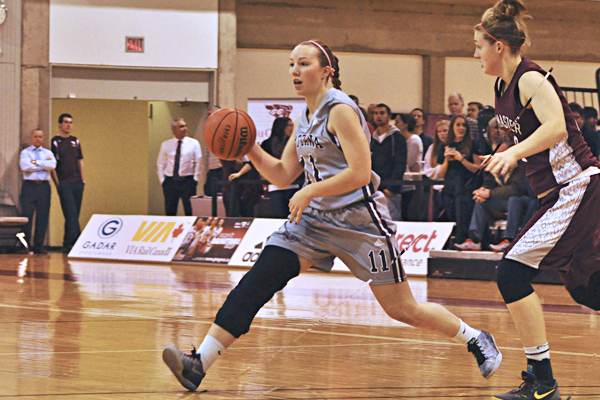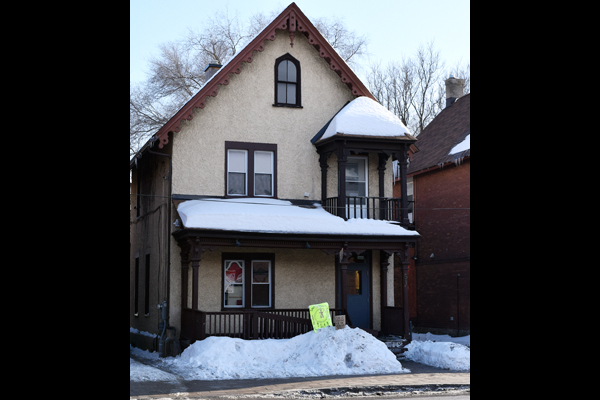How Syrian refugees are adjusting to life in Canada one year later
Ever since the Syrian Civil War erupted in March of 2011, an estimated 11 million Syrians have been displaced worldwide. Of that number, 4.8 million have been forced to flee to neighbouring countries. Inside Syria, 6.1 million have been displaced, with another 13.5 million still in need of humanitarian assistance.
In 2015, then newly minted Prime Minister Justin Trudeau committed to resettle 25,000 refugees by February 2016 and has since welcomed more than 33,239 Syrian refugees into this country, with thousands more still being processed.
However, while Canada has committed to resettling more Syrian refugees than any other country besides Germany, has it been able to provide them with a true home?
Since Nov. 4 marks the one-year anniversary of Syrian refugees arriving in Canada, I’ve interviewed three separate stakeholders of the refugee crisis to get the inside scoop on some of the unique obstacles that they still have to overcome.
Coming away from these talks, it’s obvious that while integrating Syrian refugees into Canadian society is a high priority for the federal government, these newcomers still have to face many challenges when it comes to issues like sponsorships, resources, and opportunities.
Lack of even ground
Of course, one of the biggest ongoing challenges associated with the successful integration of refugees fleeing the war is the huge gap that exists between how different groups of refugees are processed.
Much of this divide stems from the tensions that are felt between different ethnic and religious groups, which include Christian, Muslim, and Yazidi refugees. Although the government has expressed that they do not discriminate based on religion, there’s is a large divide between the experience of refugees who are privately sponsored (mostly Christian) and those who are government sponsored (mostly Muslim).
According to professor Elke Winter, a professor and researcher of sociology at the University of Ottawa, we must acknowledge the unique differences and experiences of refugees.
“We must not think that refugees are a homogenous group, many of them carry scars from the war, they may be suspicious of each other, and if they are being thrust together in small spaces with poor resources, of course there will be conflict.”
According to the Globe and Mail, the Canadian Press released data that showed government sponsored refugees tend to have more children, lower language skills, and lower education levels than their privately sponsored counterparts. Refugees who are privately sponsored also usually have more direct support.
“There are tremendous differences between private sponsorship, government sponsorship and blended sponsorship,” said Winter. “Refugees who have been privately sponsored tend to be more educated, have a higher grasp on the English language, smaller family size and integrate a little more smoothly into Canada than refugees who the government sponsors.”
One of these privately sponsored refugees is Zuka, who arrived in Canada in January 2016 with her husband and two young daughters. While this matriarch is thankful that her immediate family was able to find safety in Canada’s borders and secure private sponsorship from a local church, she contends that Christian refugees like herself still face danger in the ongoing Syrian conflict.
She fears everyday for the safety of the rest of her Christian family, who can’t stay at a refugee camp, can’t afford to live in Lebanon, haven’t been able to get government or private sponsorship, and continue to live in Syria.
“I’m safe now, but my family is still in Syria and they’re not safe. The children can’t go to school, they hear bombs, they’re not safe. They can’t go to Lebanon because it costs too much money to live.”
Lack of resources
If nothing else, Canada is renowned for our social safety net which covers a broad range of aid like housing, education, employment, and health services. While these services have been praised for their inclusivity compared to our neighbours to the South, the influx of refugees is really putting that sense of superiority to the test.
In fact, in the past 12 months, our safety net failed to accommodate this mass influx of refugees, making it very difficult for new arrivals to seek the support they need.
For example, initial medical assessments of refugees back in early 2016 revealed that 12 per cent of arrivals from Syria had at least one condition, the most common being diabetes, hypertension, and visual or hearing impairment.
Refugees get full interim health coverage for up to a year after their arrival, in addition to being eligible for health insurance in their host province. This can cover medical services, prescriptions, dental care, vision care, physiotherapy, psychotherapy and more. While this program has contributed greatly to the health of many arrivals, there are excessive wait times for services, in addition to language barriers that often make these services inaccessible.
In addition to dental care and general doctors, Winter said that a grave need for increased mental health services has been identified.
“Syrian refugees, including children, come to the country after witnessing horrible things and bring with them trauma, lack of certainty, and feelings of insecurity.”
Post-traumatic stress disorder is another recurring theme, particularly amongst male Syrian refugees due to prolonged exposure to the conflict. Yet, despite these needs, there are virtually no active programs that are efficiently tending to the specific mental health needs of Syrian refugees.
Housing resources pose another challenge to integration, where new arrivals share concerns over the lack of housing options, high rental prices, and lack of adequate space for large families.
In the eyes of Jan Underwood, a cultural awareness educator for the Central Alberta Refugee Effort, Alberta was a unique case because many Canadian families were already moving out of the province due to problems in the oil industry.
“Housing depends largely on the refugee situation, how many people are in their family, whether there’s an extended family member they can join,” said Underwood. “We found it was difficult at first when the large numbers of people needed accommodation but coincidently because of the other situation in Alberta and people leaving the oil slump, then it wasn’t so much of a problem.”
However, the same can’t be said for the rest of the country.
According to Jacquie Miller from the Ottawa Citizen, a family of four sponsored by the federal government might receive a monthly house allowance of $795, while the average rent for a two-bedroom apartment in Ottawa is $1,159. Given that refugees have a wait time of five to seven years for subsidized housing, finding a job that can account for this cost is exponentially more difficult.
Lack of opportunity
In her life before the war, Zuka was a teacher and enjoyed using the skills that she learned from being a mother to educate the youth of her community. However, now that she is living in Canada, it will be very difficult for her to find employment without a working level of English proficiency and some degree of Canadian work experience.
“I can work in the daycare and take care of the babies. I am a mother, I can do my job easily,” she said. “All of the people in the church help us with food and housing, but I don’t need that. I am young and I need to work. It’s very easy for me to stay in my home but I need to work.”
Barriers to entering the workforce as a Syrian refugee include everything from language proficiency, not owning a driver’s license or vehicle, education program wait times and cost, Canada’s strict accreditation policies, and workplace discrimination.
Winter identifies language proficiency as a top challenge for refugees seeking employment.
“Communication is a big issue. It makes it so hard for refugees to feel accepted or gain employment if they are not able to communicate with people.”
Underwood agreed, adding “We didn’t realize that the literacy level of the Syrian refugees was so low. So a lot of them are definitely not employable and they are going to be dependent on government assistance for quite a long time.”
Not only are most Syrian refugees not proficient in the English language, there are also not enough services to adequately educate these new arrivals.
One year into the arrival of Syrian refugees, and only approximately 5,400 of 33,239 Syrian refugees are enrolled in federally funded language courses since last year due to excessively long waiting lists.
Even for those who have been lucky enough to secure spots in English as a Second Language (ESL) courses, the level of English taught is not enough for many employment opportunities.
New Canadians are taught basic English, but for anything more advanced they have to attend post-secondary level courses, which are usually more about literature than obtaining a high level of English language proficiency.
Underwood said that there is a need not only for more ESL programs, but also for higher-level English programs that are both relevant and affordable.
“We need to bridge that gap—creating a program for them that’s relevant and also cheap enough that they can afford to do it.”
While school-aged children are able to enroll in schools, Underwood said classrooms are often over-packed and at the beginning of the transition, a lot of teachers didn’t know how to accommodate ESL students in the classroom.
“A lot of the classes became quite full, the ESL classes filled up, and some of the teachers had absolutely no idea how to deal,” said Underwood.
The light at the end of the tunnel
Bringing Syrian refugees into the country was the easy part. Making Canada an inclusive home for these newcomers, however, requires more dedication and resources that will meet the diverse needs of new arrivals.
Thankfully, one year into the integration, we have seen many services sprouting out across the country to fill in the gaps.
According to Underwood, there are currently over 244 agencies offering over 1,380 different services for refugees. Some of these programs help with job development, writing Canadian-style resumes, or even offering free courses for professional English language development.
While these programs have been able to target the needs of refugees—accommodating varying schedules, locations, and needs such as child care—they often fill up quickly, have very long waiting lists, and fail to reach the majority of refugees who would benefit from these services.
Canada prides itself on its diverse, multicultural society, yet the act of simply bringing refugees to our country is not enough to pat ourselves on the back.
“It’s important to remember that refugees are people,” said Winter. “They all have different experiences and needs, but at the end of the day they are people and they need to be treated as such.”
Hopefully in the coming years we’re able to make Canada more than just a place to live for these newcomers—we’ll be able to make it a home.
As Underwood said, “Diversity is a word, inclusion is an action.”








